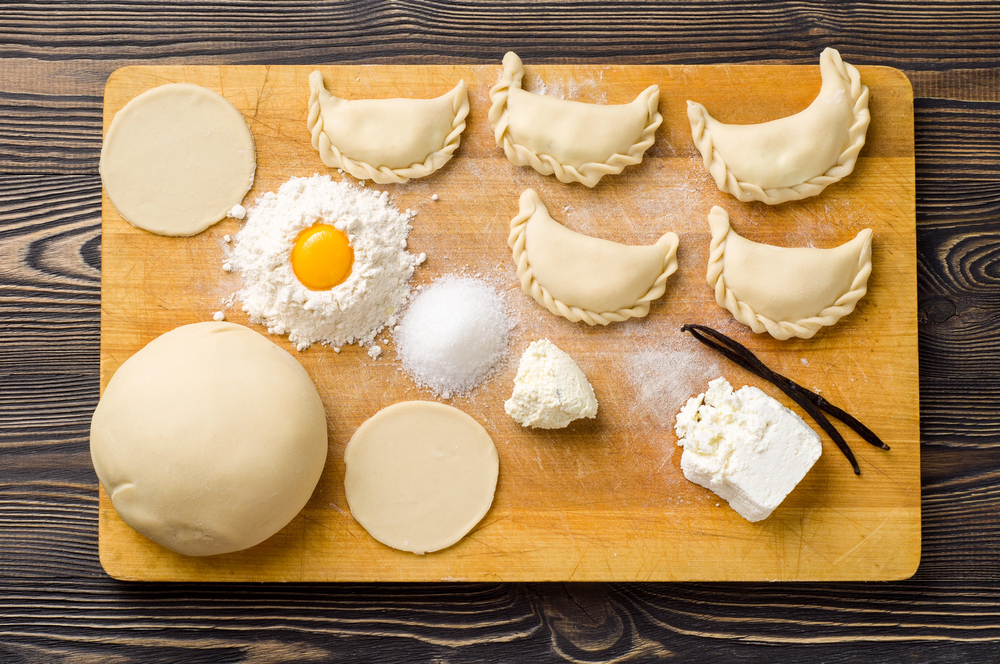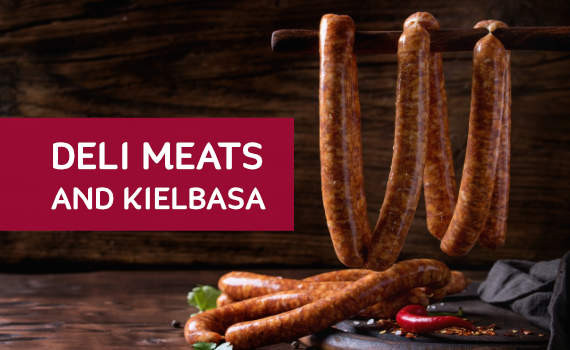Pierogi, those delightful half-moon dumplings, are more than just food in Poland. They are a deeply rooted tradition, woven into the fabric of Polish history and culture. Often served with the sweet tang of applesauce, pierogi offer a culinary experience that spans centuries and connects generations. This blog post explores the fascinating story of pierogi and applesauce – their history, diverse fillings, regional variations, and cultural significance.
A History of Pierogi: From Simple Beginnings to National Icon
Pierogi’s Polish journey started in the 13th century, likely originating from the Far East and arriving through interactions with eastern neighbors like Kievian Rus. Legend says that Saint Hyacinth of Poland, a monk who lived in a Kiev monastery, brought these dumplings to Poland. While their exact origin is debated, the word “pierogi” comes from the Proto-Slavic word “pir,” meaning “a feast.” This perfectly reflects how pierogi are associated with celebrations and gatherings.
Initially, pierogi were a staple food for peasants. Over time, they became popular among all social classes in Poland. By the 17th century, they were a key part of Polish cuisine, with different variations made for specific holidays and events. The first written pierogi recipes appeared in “Compendium Ferculorum,” Poland’s first cookbook, published in 1682.
Today, pierogi are Poland’s national dish, a symbol of national pride and a testament to enduring traditions. They are central to family gatherings, holiday feasts, and festivals. Their popularity is clear – at the 2007 Pierogi Festival in Kraków, people ate a remarkable 30,000 pierogi each day!
Exploring the Variety of Pierogi Fillings
Pierogi’s appeal lies not just in their history, but also in their versatility. The fillings vary widely, offering a range of flavors from savory to sweet, traditional to modern. For instance, the Potato and Cheese (Pierogi Ruskie) filling is enhanced by the addition of caramelized onions, which, when mixed with mashed potatoes, contribute a savory depth that makes this traditional variation particularly popular.
Savory Sensations: A Culinary Adventure
- Potato and Cheese (Pierogi Ruskie): This classic filling is a mix of mashed potatoes, farmer’s cheese (twaróg), and sautéed onions. It’s the most popular pierogi variety. “Pierogi ruskie” doesn’t mean Russian origin; it refers to the historical region of Ruthenia, which included parts of modern-day Ukraine and Poland. This filling originated in pre-war Poland, in an area that is now part of Ukraine.
- Meat: Ground meat, usually pork or beef, seasoned with onions and spices, makes a hearty and satisfying filling.
- Sauerkraut and Mushroom: This flavorful combination is a favorite, especially during Christmas Eve dinner (Wigilia). The sauerkraut provides a tangy taste, while the mushrooms add an earthy richness.
- Cabbage: Cabbage fillings can use either fresh or fermented cabbage, often mixed with mushrooms or onions for a complex flavor.
- Spinach and Ricotta: This lighter, vegetarian option offers a mild flavor and a creamy texture.
- Lentils and Garlic: This vegan-friendly filling is both tasty and nutritious, showing pierogi’s adaptability to different diets.
Sweet Delights: A Delicious Indulgence
- Fruit: Pierogi embrace seasonal fruits with fillings like blueberries, strawberries, raspberries, and plums. These sweet versions are often eaten as a main course, a tradition that may surprise those new to Polish cuisine.
- Sweet Cheese: Farmer’s cheese (twaróg) becomes a sweet treat when mixed with sugar and vanilla, creating a classic sweet filling.
- Poppy Seed: A traditional filling for Christmas Eve. Poppy seed pierogi use ground poppy seeds and often include honey and dried fruits.
- Modern Variations Modern sweet fillings now include options such as bilberry, raspberry, and apple & cinnamon.
Applesauce: The Perfect Partner
Applesauce, with its balance of sweetness and tartness, is the ideal accompaniment to both savory and sweet pierogi. Its simplicity lets the pierogi filling’s flavors shine, while also adding a refreshing contrast. Mullen’s Apple Sauce, especially the chunky version, is a popular choice.
Apples in Polish Cuisine: A Rich Tradition
Apples have a long and valued history in Polish cooking. Poland is a major apple producer, with a rich tradition of apple cultivation and many apple-based dishes. Applesauce is a staple in many traditional Polish recipes. It is commonly used as a topping for sweet pierogi, pancakes, and even as a substitute for fat or eggs in baking.
Applesauce’s simplicity complements the diverse and often complex flavors of pierogi. Together, they create a harmonious mix of tastes and textures that evoke comfort and nostalgia.
Pierogi and Applesauce: A Cultural Tradition
Serving pierogi with applesauce, especially during holidays or special occasions, is a deeply ingrained Polish tradition. Pierogi symbolize abundance, while applesauce represents the simplicity and wholesomeness of Polish cuisine. This pairing is more than just a culinary combination; it reflects Polish values and heritage.
The tradition of eating vegan pierogi on Christmas Eve is particularly significant. This custom comes from the Roman Catholic Church’s rule of a strict fast on the day before Christmas. Polish Catholics celebrate Wigilia, a meatless feast that includes vegan pierogi, often filled with sauerkraut or potatoes, along with dishes like borscht (beet soup).
Regional Variations: A Culinary Map
Across Poland’s diverse regions, pierogi recipes and serving traditions show a fascinating array of variations. These reflect local ingredients, culinary influences, and cultural nuances.
- Mazovia: Buckwheat groats with bacon or sausage are a popular filling, showcasing the region’s hearty flavors.
- Podlasie: Curd cheese and potato fillings are common, highlighting the use of local ingredients.
- Kraków: During Christmas Eve dinner, mushroom and cabbage fillings are preferred, reflecting the regional taste for seasonal ingredients.
- Silesia: “Silesian dumplings,” which are smaller and have a potato-based filling, are a regional specialty, often served with gravy or butter.
- Lublin: This region has a unique pierogi variation filled with buckwheat, mint, bacon, and onions.
In many regions, the dough is rolled out and cut into circles using a large round cookie cutter to ensure uniformity. To keep the dough from drying out while it rests, it is often wrapped in plastic wrap and refrigerated.
These regional variations are not just culinary differences; they reflect Poland’s diverse landscape, where local ingredients and culinary traditions have shaped pierogi’s evolution over generations.
Pierogi and Applesauce Beyond Poland
Pierogi’s appeal extends beyond Poland, especially in countries with large Polish communities. In the United States and Canada, pierogi are a symbol of ethnic pride among Polish diaspora communities. They are often featured in festivals and community events, serving as a culinary link to their Polish heritage.
Many Americans have grown to love pierogi and Polish home cooking through personal connections and experiences. Whether it’s childhood memories of sharing pierogi with Polish friends or enjoying them at community gatherings, pierogi have found a place in many American hearts and kitchens. You too can enjoy these delightful dumplings by exploring our selection of pierogi for sale.
Pierogi and Applesauce in the Modern World
While traditional pierogi and applesauce remain beloved, modern culinary trends have sparked innovation, leading to new and exciting variations.
- Fusion Fillings: Chefs and home cooks are experimenting with a fusion of flavors, incorporating ingredients like spinach and feta, sweet potato and goat cheese, or even Philly cheesesteak into pierogi fillings.
- Creative Toppings: Beyond applesauce, pierogi are now served with various toppings, from marinara sauce and cranberry relish to chocolate sauce, expanding the culinary possibilities. Frying pierogi in a pan until they achieve a golden brown color and crispy texture is a popular method that enhances their flavor and presentation.
- Vegan and Gluten-Free Options: With growing awareness of dietary needs, vegan and gluten-free versions of pierogi and applesauce are becoming more common, ensuring everyone can enjoy this dish.
Recipes
Try cooking this delicious food in your own kitchen:
In this article, we will guide you through various pierogi recipes, inviting you to try out the presented recipes and enjoy the traditional and innovative fillings.
Pierogi Dough
To make the perfect pierogi dough, you will need flour, water, eggs, and a pinch of salt. Mix the ingredients until you form a smooth dough. Use a rolling pin to roll out the dough to the right thickness, ensuring it is easy to handle on a well-floured surface.
Potato and Cheese Filling
For the classic potato and cheese filling, boil potatoes until tender, then mash them with cheese, salt, and pepper. Fill the pierogi dough with this mixture and cook until golden brown. Serve your pierogi with sour cream to enhance the flavor, and consider adding apple sauce for a delightful balance of savory and sweet.
Pierogi Dough
Ingredients:
- All-purpose flour: 4 cups
- Hot water: 1 cup + 2.5 Tbsp
- Butter or vegetable oil: 3 tablespoons
- Salt: 1 teaspoon
Instructions:
- Mix flour and salt in a large bowl.
- Heat water and butter (or oil) until very hot (not boiling).
- Pour hot water and butter into flour and mix with a wooden spoon.
- Knead dough until smooth and elastic.
- Wrap dough in plastic and rest for 30 minutes.
Potato and Cheese Filling
Ingredients:
- Farmer’s cheese (twaróg): 300g
- Onion, finely chopped: 300g
- Potatoes, mashed: 700g
- Vegetable oil: 2 tablespoons
- Salt and pepper: To taste
Instructions:
- Sauté onions in oil until golden brown.
- Combine mashed potatoes, farmer’s cheese, and sautéed onions.
- Season with salt and pepper.
Applesauce
Ingredients:
- Apples, peeled and chopped: 4
- Water: 1/2 cup
- Cinnamon: 1 teaspoon
- Sugar: 1/4 cup
- Lemon juice: 1 tablespoon
Instructions:
- Combine apples, water, cinnamon, sugar, and lemon juice in a saucepan.
- Cook over medium heat until apples are soft.
- Mash or blend to your desired consistency.
Conclusion: A Culinary Legacy Continues
Pierogi and applesauce are more than just a meal in Polish culture; they are a culinary legacy, a story passed down through generations, a connection to heritage, and a symbol of national pride. From their simple beginnings as peasant food to their modern variations, pierogi continue to unite people, offering a taste of Polish history, tradition, and culinary creativity.
The lasting appeal of pierogi and applesauce lies in their ability to evoke comfort and nostalgia, while also embracing culinary innovation. Whether enjoyed during a festive celebration or a simple weeknight dinner, this classic pairing provides a flavorful experience that captures the essence of Polish cuisine. As culinary trends evolve, we can expect even more creative expressions of pierogi and applesauce, ensuring that this culinary legacy thrives for generations to come.








